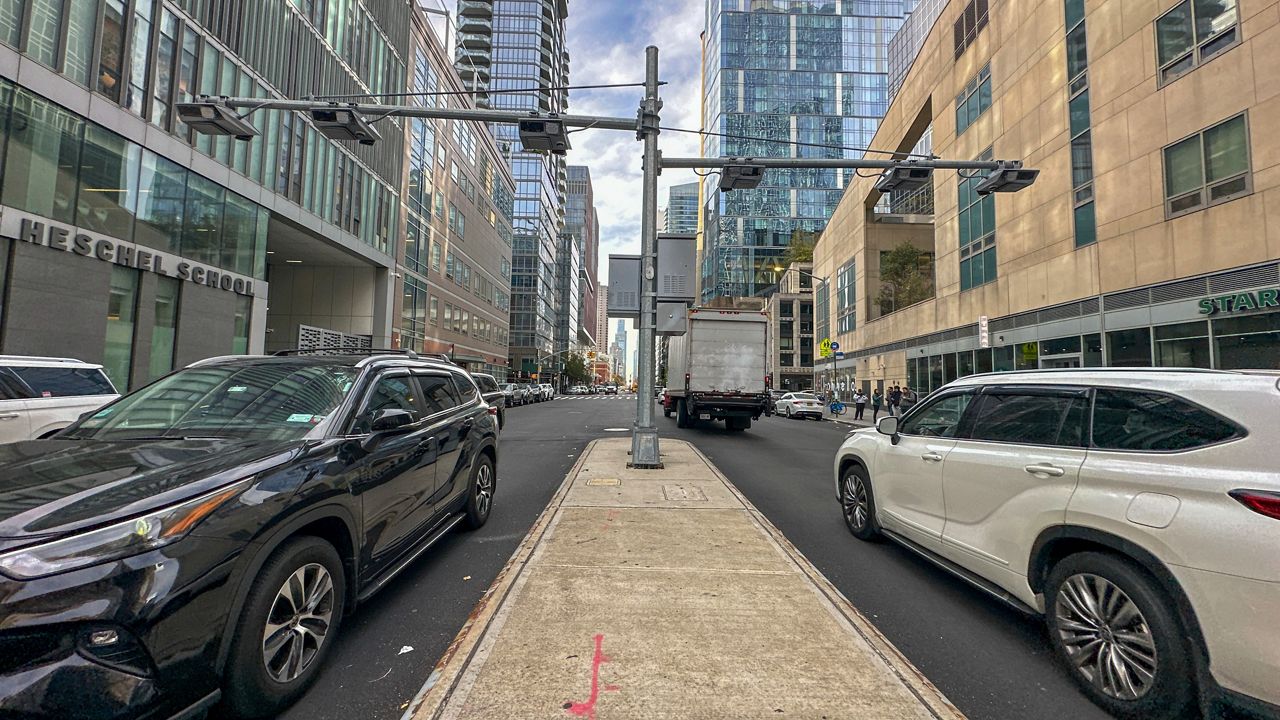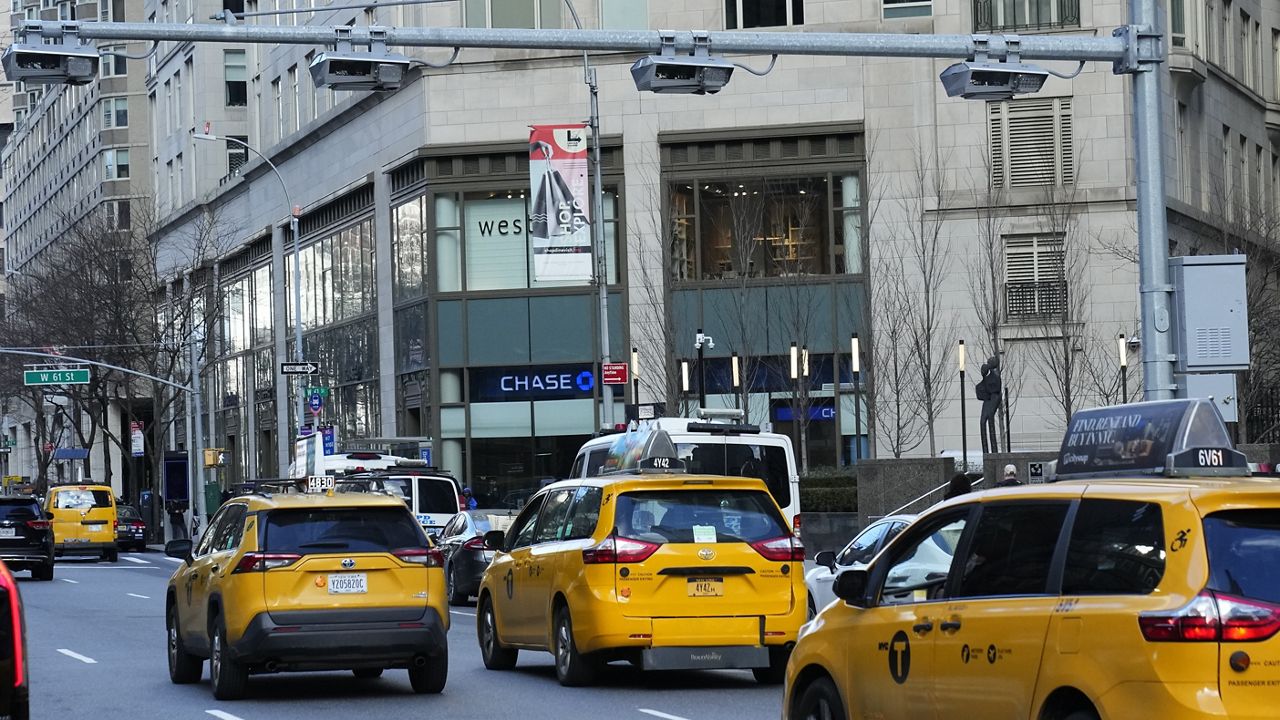For the first time Wednesday, the MTA heard from the Traffic Mobility Review Board — a six-person panel deciding the future of congestion pricing.
“The pandemic may have put things on pause for some time but traffic is back at slower speeds than ever,” said Juliette Michaelson, the deputy chief of external relations officer for the MTA.
What You Need To Know
- For the first time, the MTA heard from the Traffic Mobility Review Board — a six-person panel deciding the future of congestion pricing
- The board will determine the exact toll amount and any exemptions. It could range between $9 to $23 during peak travel times
- The board does not have a set number of hearings it will conduct or a date to vote on congestion pricing. The MTA would like to start charging drivers by next spring
Congestion pricing is a controversial plan to charge drivers entering Manhattan below 60th Street, which the MTA calls the central business district or the “CBD.”
“Seven miles-per-hour in the CBD and 5 miles-per-hour in Midtown,” said Michaelson.
The board will determine the exact toll amount and any exemptions.
The tolls could range between $9 to $23 during peak travel times.
Proponents of the plan say it would improve the overall quality of life for New Yorkers.
“The CBD has particularly poor air quality. More vehicles mean more crashes. More traffic means slower ambulances, police cars, fire trucks and it takes longer to respond to emergencies,” said Michaelson.
The MTA hopes to provide $15 billion to its capital plan.
The state legislature passed congestion pricing in 2019. The program faced significant delays in receiving federal approval, which it got last month.
More than 120 groups have asked for an exemption, including for-hire app drivers and taxi drivers.
They held a rally outside MTA headquarters ahead of the meeting.
“Already we are suffering. And to give us another fee on top of it, it’s not only going to kill the business for the drivers. It’s going to kill the business for the small owners as well because the public won’t want to come into the city,” said Michele Dottin, an Uber driver.
But it’s still not clear how the board will move forward with for-hire vehicles, which will be charged once a day for entering Manhattan below 60th Street.
The Congestion Pricing Now Coalition, an advocacy group, has recommended the MTA to assess a per-ride surcharge instead.
“FHV’s currently provide over 7 million monthly trips that start in or pass through the Manhattan. CBD and this compares to about 2.5 million trips by yellow taxis,” said Will Carry, a board member.
A big discussion amongst the board was the idea of an overnight discount and what hours would make up one.
“Shift workers usually 10 at night to 6 in the morning or 11 at night to 7 in the morning or 12 to 8. There’s nothing about that little down, that four-hour window that gives any benefit to the working people that make New York go,” said John Samuelsen, president of teh Transit Workers Union.
But Allison de Cerreno, the chief operating officer of MTA Bridges and Tunnels, says giving a break to shift workers would defeat the purpose because it gives a break to everyone.
“And the overall purpose of the project, the most fundamental purpose of the project is, in fact, to reduce congestion,” said de Cerreno.
“I know you put an explanation in Allison, but with all due respect, if you didn’t live it, you can’t understand what it does to you when you’re pinching pennies. So we have to figure something out,” said board member John Durso.
The board does not have a set number of hearings it will conduct or a date to vote on congestion pricing.
The MTA would like to start charging drivers by next spring.






_PKG_DOT_BQE_Improvements_CG_131225588_368)
